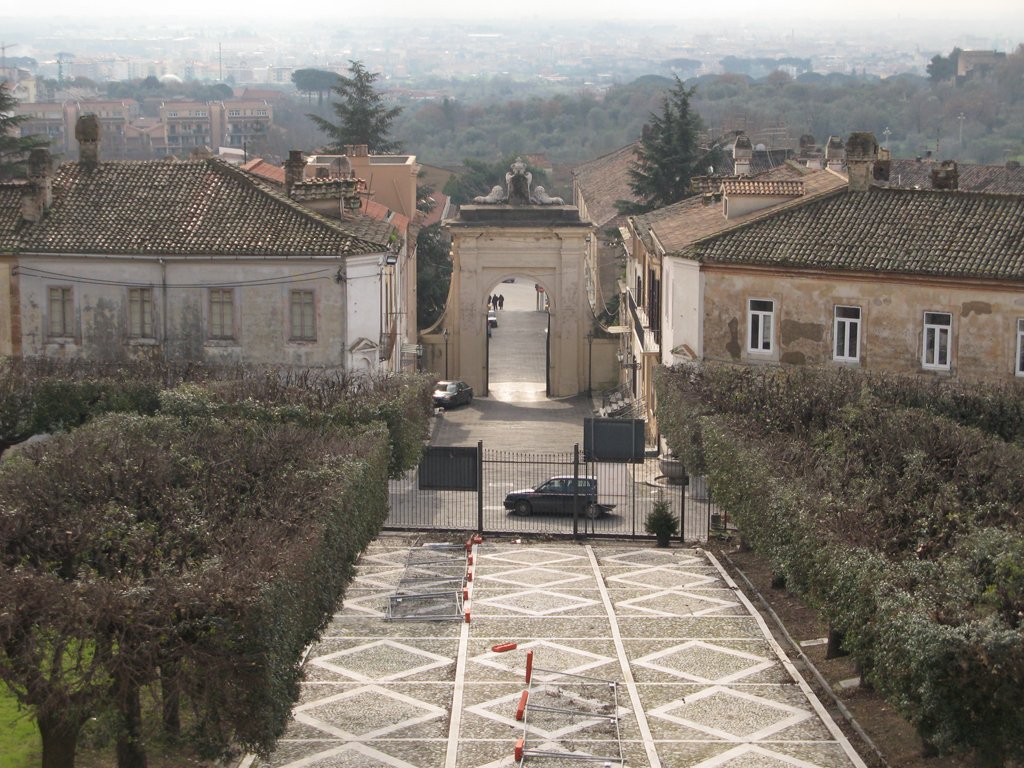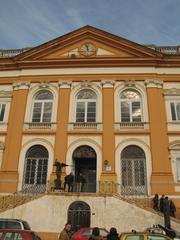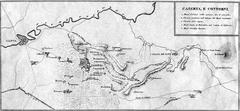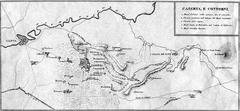
San Leucio, Caserta, Italy: Visiting Hours, Tickets, and Travel Guide
Date: 14/06/2025
Introduction to San Leucio and Its Significance
Just northwest of Caserta in southern Italy lies San Leucio, an extraordinary UNESCO World Heritage Site offering a unique window into 18th-century social and industrial innovation. Born from an ambitious vision of King Ferdinand IV of Naples, San Leucio transformed from a royal hunting lodge into a pioneering silk colony. This experiment combined state-of-the-art industrial processes with progressive social laws—advocating gender equality, education, and workers’ welfare—that were generations ahead of their time. The site is renowned for its silk factory, whose exquisite textiles graced royal courts across Europe, and for its utopian governance model, which left a lasting legacy on social reform.
Today, visitors can explore the Real Belvedere palace, the Silk Museum with its historic machinery, and the harmoniously designed workers’ village, all set against breathtaking views of the Gulf of Naples and Mount Vesuvius. Whether you are a history enthusiast, a lover of architecture, or simply intrigued by rare utopian communities, this comprehensive guide will help you plan a meaningful visit to one of Italy’s most significant heritage sites. For further details, consult official resources such as the Reggia di Caserta website, the Visit Campania portal, and Lampoon Magazine’s feature on San Leucio’s silk tradition.
Contents
- Introduction
- History and Origins
- The Silk Industry and Social Experimentation
- The Statute of San Leucio: Utopian Governance
- Architecture and Urban Planning
- Industrial and Cultural Legacy
- Visitor Information: Hours, Tickets, and Accessibility
- Main Attractions and Unique Experiences
- Guided Tours and Events
- Practical Tips and Nearby Sites
- Frequently Asked Questions (FAQ)
- Conclusion
- Official Sources and Further Reading
History and Origins
San Leucio’s story began in the late 18th century under the Bourbon dynasty. Originally a hermitage and hunting lodge, the estate was transformed after the death of King Ferdinand IV’s son. Seeking to memorialize his son and provide for the local poor, the king established the Real Colonia di San Leucio in 1778 (Lampoon Magazine). The colony was strategically located near the Royal Palace of Caserta, overlooking the Gulf of Naples and Mount Vesuvius, and was designed to be self-sufficient with vineyards, woodlands, and farmland (Visit Campania).
The Silk Industry and Social Experimentation
San Leucio quickly became an international center for silk production. The king attracted skilled artisans from across Europe and built the Manifattura di San Leucio silk factory within the Belvedere Palace, which became the heart of the community (Euronews). The factory’s silks adorned royal palaces, including Buckingham Palace, the Vatican, and the White House (Lampoon Magazine). Its key structures, such as the “Coccoliera” and “Gran Filanda,” supported every step of the silk-making process (Springer).
The Statute of San Leucio: Utopian Governance
In 1789, Ferdinand IV introduced the “Statute of the Royal Colony of San Leucio,” a groundbreaking set of social reforms. The statute established equal pay for men and women, free education, housing, and healthcare for workers (Visit Campania). Dowries were abolished, and merit was emphasized over birthright. Architect Francesco Collecini designed 37 workers’ homes between 1786 and 1794, many of which still stand today. San Leucio thus became an early model for egalitarian, welfare-oriented society.
Architecture and Urban Planning
The Real Belvedere palace is San Leucio’s architectural centerpiece, with a 354-meter-long façade, grand staircases, and panoramic terraces (Lampoon Magazine). The palace included royal apartments, the silk factory, schools, and administrative offices, integrating residential and industrial functions. The orderly village layout, workers’ homes, and the Church of San Ferdinando Re reflect Enlightenment ideals of rationality, equality, and harmony with nature (Visit Campania).
Industrial and Cultural Legacy
Throughout the 19th century, San Leucio’s silk industry flourished, producing brocades, velvets, and innovative fabrics like “filo di vetro” (glass thread) (Lampoon Magazine). Despite challenges after Italian unification, the silk tradition persists, with local artisans maintaining ancient techniques. In 1997, San Leucio joined the Royal Palace of Caserta and the Aqueduct of Vanvitelli as a UNESCO World Heritage Site (UNESCO). The on-site museum preserves historic looms and artifacts, keeping this legacy alive.
Visitor Information: Hours, Tickets, and Accessibility
Opening Hours
- San Leucio Complex: Generally open Tuesday through Sunday, 9:00 AM to 6:00 PM. Closed Mondays and select holidays. Hours may vary seasonally; always check the official website for updates.
- Belvedere of San Leucio:
- Monday to Saturday: 09:30–13:30
- Sundays and Holidays: 09:30–12:00
- Afternoon openings: April to October at 15:30 and 17:00; November to March at 15:00 and 16:30
- Closed Wednesday afternoons (Italia.it)
Tickets
- Standard adult ticket: €9
- Reduced rate (ages 6–18): €6
- Special rate on selected days: €4
- Separate Weaver’s House ticket: €1
- Caserta residents: €4 (excluding Weaver’s House)
- Combined tickets with the Royal Palace of Caserta are available
- Purchase tickets online or at the entrance
Accessibility
- Main areas and museum are wheelchair accessible
- Some historic buildings, such as the Weaver’s House, may not be fully accessible
- No specific sensory supports available currently
- For mobility needs, contact the visitor center in advance
Getting There
- By Car: Ample parking is available near the site
- Public Transport: From Caserta railway station, take AirCampania bus line 04-UC to Piazza della Seta (departures every 60 minutes), then an 8-minute walk
- Guided Tours: Available in multiple languages; advance booking recommended for English tours
Main Attractions and Unique Experiences
- Silk Museum: See historic looms and machinery, and learn about the full silk-making process
- Royal Apartments: Explore the luxurious rooms once used by the Bourbon family, richly furnished with San Leucio silk
- Royal Gardens: Enjoy panoramic views of Caserta, the valley, and Mount Vesuvius
- Workers’ Quarters: Walk the orderly streets and see the original workers’ homes
- Weaver’s House: Discover daily life in the silk colony (separate ticket required)
- Church of San Ferdinando Re: Open during Eucharistic celebrations
Guided Tours and Events
- Guided Tours: 60–90 minutes, available in several languages, offering deep historical and technical insight
- Cultural Events:
- Leuciana Festival: Summer music, theater, and art festival
- Palio della Seta (Silk Festival): Historical parades and silk-making demonstrations every July
- Un’Estate da Belvedere: Summer concerts and performances
Practical Tips and Nearby Sites
-
Best Time to Visit: Spring and autumn for pleasant weather; July for the Silk Festival
-
Recommended Duration: 2–3 hours for a full visit
-
Nearby Attractions:
- Royal Palace of Caserta: Grand palace and extensive gardens
- Caserta Vecchia: Medieval hilltop village with historic cathedral and castle ruins
- Vanvitelli Aqueduct: 18th-century engineering marvel and part of the UNESCO site
- Caserta National Archaeological Museum: Roman and pre-Roman artifacts
-
Local Experiences:
- Sample Mozzarella di Bufala and local cuisine at nearby trattorias
- Explore local artisan silk workshops
-
Travel Considerations:
- Photography is generally permitted; avoid flash and tripods
- Most signage and tours are in Italian; English options are available for tours and some signage
Frequently Asked Questions (FAQ)
Q: What are San Leucio’s opening hours?
A: Generally, Tuesday to Sunday, 9:00 AM–6:00 PM, with some seasonal variation. The Belvedere has specific morning and afternoon times; check the official website for details.
Q: How can I buy tickets?
A: Tickets are available online and at the entrance. Combined tickets with the Royal Palace of Caserta are often offered.
Q: Are guided tours available?
A: Yes, in several languages. Booking in advance is recommended, especially for English-language tours.
Q: Is San Leucio accessible for visitors with disabilities?
A: Main areas are accessible, but some historic buildings have limited access. Contact the site for specific needs.
Q: What events take place at San Leucio?
A: Major events include the Leuciana Festival, Palio della Seta, and Un’Estate da Belvedere.
Q: How do I get to San Leucio from Caserta?
A: By car, taxi, or local bus (AirCampania 04-UC), with an 8-minute walk from Piazza della Seta.
Conclusion
San Leucio stands as a testament to the vision of enlightened monarchy, merging progressive social ideals with industrial innovation and architectural grandeur. Its well-preserved silk factory, workers’ village, and stately palace offer a multifaceted visitor experience. The site’s ongoing vitality—expressed through festivals, artisan workshops, and educational programs—keeps its legacy alive as a living cultural landscape. For the richest experience, check official visiting hours and ticket options in advance, and consider booking a guided tour. Combine your visit with nearby highlights such as the Royal Palace of Caserta and Caserta Vecchia for a full immersion in Campania’s heritage. For more information, download the Audiala app, explore related guides, and follow San Leucio’s cultural venues online.
Official Sources and Further Reading
- San Leucio: Visiting Hours, Tickets, and Exploring Caserta’s Historic Silk Colony, 2023, Lampoon Magazine
- San Leucio Cultural Significance and Visitor Guide: History, Tours, and Tickets, 2024, Reggia di Caserta Official Site
- Belvedere of San Leucio Visiting Hours, Tickets, and Visitor Guide to Caserta Historical Sites, 2024, Italia.it
- Visiting San Leucio and Surrounding Historical Sites: Hours, Tickets, and Travel Tips, 2024, Understanding Italy
- The struggle to keep the two hundred-year-old Italian silk tradition alive, 2023, Euronews
- UNESCO World Heritage Site information





